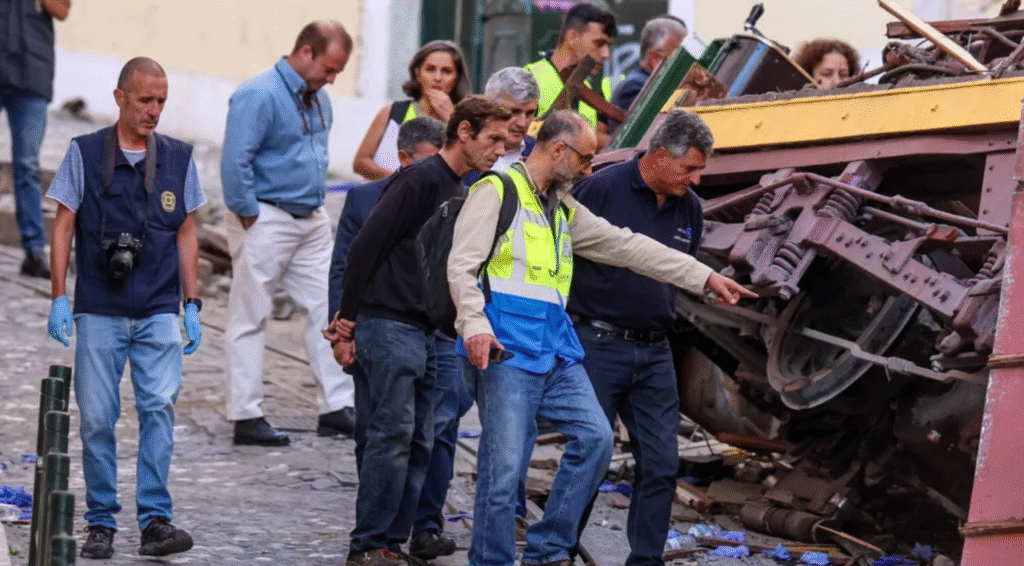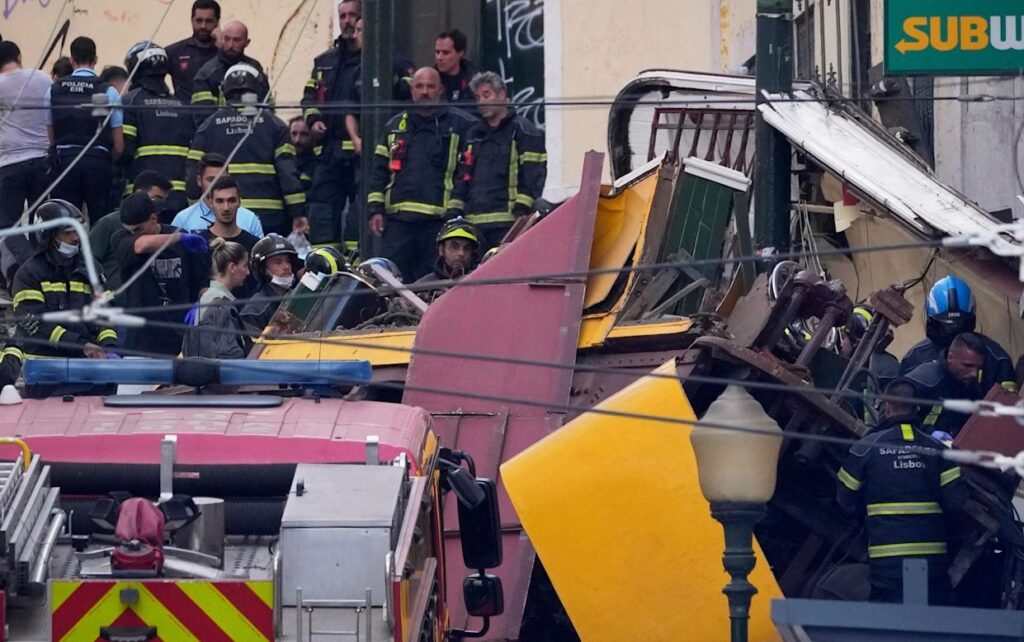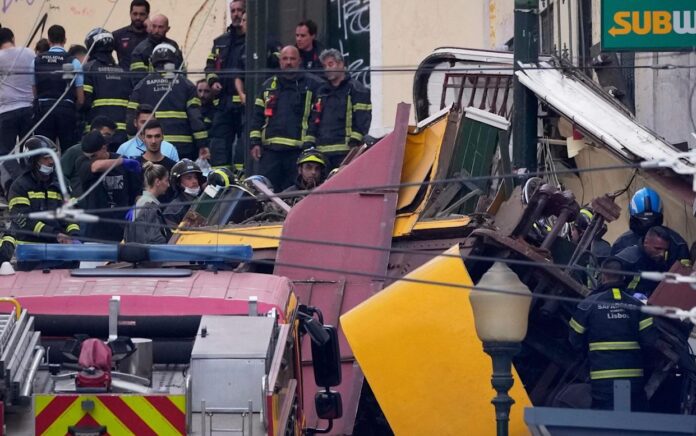The Lisbon funicular crash tragedy has left Portugal shaken after a horrific accident killed at least 16 people and injured around 20 more. The Gloria funicular, one of the city’s most famous tourist attractions, derailed on Wednesday evening, turning a joyful ride into a devastating scene of chaos and sorrow.
Witnesses described the moment as “out of control,” with the funicular hurtling down the steep cobblestoned street before smashing into a building with brutal force. Thick black smoke, screaming passengers, and frantic bystanders painted a terrifying picture that Lisbon will never forget.

The Lisbon Funicular Crash Tragedy: What Happened?
Around 6:00 PM local time, one of the two carriages of the 140-year-old Gloria funicular suddenly lost control. Normally, one carriage travels uphill while the other comes down, connected by a cable system. But on this tragic day, the balance failed.
According to eyewitnesses, the lower carriage, which had just begun ascending, suddenly rolled backward. A loud screech echoed, followed by a hard stop and black smoke. Just moments later, the upper carriage sped downhill uncontrollably, slammed into a building, and crumpled like paper.
Tourists and locals nearby described the sound as similar to a bomb going off, followed by silence and then screams. People rushed to help survivors, but the force of the crash was devastating.
Witness Accounts of the Lisbon Funicular Crash Tragedy
Helen Chow, a Canadian tourist, said:
“It was complete silence after the impact. Then pitch black smoke covered everything. When it cleared, the horror was visible, people crying, frantic, and others running up the hill to help.”
Another witness, Teresa d’Avó, described the crash as terrifying:
“The carriage had no brakes. It hit the building with brutal force and folded like a cardboard box.”
A shop owner nearby added:
“I’ve never seen so many people dead together. It was like a nightmare.”
These harrowing accounts underline the sheer scale of the Lisbon funicular crash tragedy, turning one of Lisbon’s historic landmarks into a scene of unimaginable grief.
Victims of the Lisbon Funicular Crash Tragedy
Officials confirmed at least 16 deaths, with around 20 others seriously injured. Emergency teams worked quickly to rescue passengers trapped inside the wreckage. Many victims were tourists, including families who had planned to enjoy Lisbon’s charm but found themselves caught in tragedy.
Portugal has since declared a national day of mourning to honor the victims, with flags flying at half-mast across government buildings.
Why Did the Lisbon Funicular Crash Happen?
Authorities are still investigating the cause. Early reports suggest a mechanical failure in the cable system or braking mechanism.
The Gloria funicular, built in the late 19th century, had undergone renovations over the years and was powered by electric motors. However, experts warn that aging systems combined with steep tracks may pose high risks if not thoroughly maintained.
This Lisbon funicular crash tragedy may now spark global discussions about railway and cable-car safety.
Global Reaction to the Lisbon Funicular Crash Tragedy
The story has captured international attention. From Europe to North America, headlines have highlighted Lisbon’s tragedy. Many travelers who had once ridden the funicular expressed shock online, sharing memories of their experiences.
Some experts compared the crash to previous global cable-car disasters, urging for stricter international safety standards.

Lisbon’s Historic Gloria Funicular
The Gloria funicular has been in operation for over 140 years, connecting Restauradores Square to the Bairro Alto district. Known for its steep incline and yellow-and-white design, it became both a local commuter line and a popular tourist attraction.
Now, its historic charm has been overshadowed by the Lisbon funicular crash tragedy. Questions remain about whether this beloved landmark can ever reopen.
Portugal’s Response to the Lisbon Funicular Crash Tragedy
Prime Minister António Costa expressed deep condolences to the victims’ families, promising a full investigation. He emphasized that safety reforms will follow, ensuring such a disaster never happens again.
Tourism officials also confirmed support for foreign nationals affected by the tragedy. Lisbon city leaders pledged to provide counseling for survivors and rescue workers, who witnessed scenes of unbearable devastation.
Could This Tragedy Have Been Prevented?
Experts believe routine inspections may not have been enough to catch underlying structural issues. Independent transport analysts argue that Europe must review safety regulations for historic transport systems like funiculars, trams, and cable cars.
The Lisbon funicular crash tragedy serves as a harsh reminder that modernization and safety must always come first, especially for attractions carrying thousands of passengers each week.

